Hagia Sophia Mosque
Regardless of our religious beliefs, certain places have undeniable energy—the power to stir our emotions, inspire reflection, or fill us with peace.
If you want to connect with your spiritual side and renew your sense of wonder, Hagia Sophia is the perfect place for you.
Hagia Sophia symbolizes the splendour and grandeur of the Byzantium Empire and an incredible feat of human engineering. Its architectural beauty, expressed in its breathtaking domes, monolithic marble columns and unparalleled mosaics, makes it one of the wonders of the world's architectural history.
Ancient and Amazing Mosque of Hagia Sophia
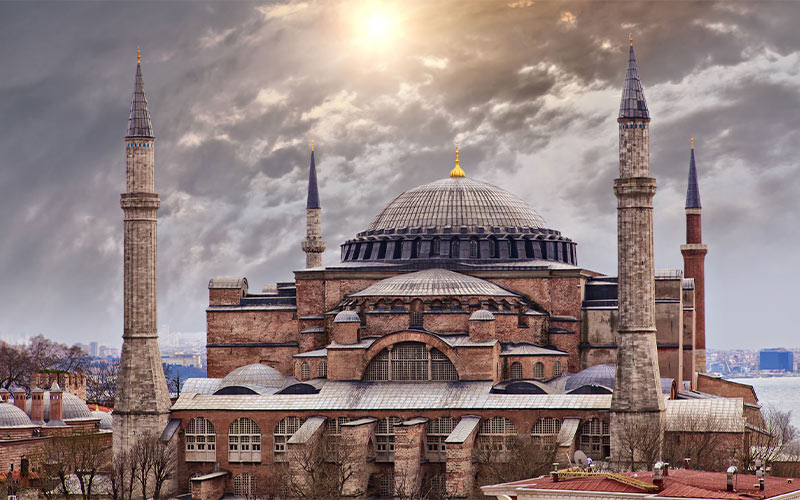
The sheer dazzling beauty of the mosque, with its majestic architecture and captivating decor, provokes worship in the believer!
Hagia Sophia means "holy wisdom" in Turkish. This place was initially built as a cathedral in Constantinople in the sixth century. Over the centuries, It has been converted into a mosque, then into a museum, and yet again into a mosque.
In this article, you will learn everything about the Hagia Sophia mosque: its history, architecture, when to visit, what to wear, and its opening hours.
Hagia Sophia History

While Hagia Sophia is not the oldest intact building in the world, it is certainly close. The current Hagia Sophia has survived many damages throughout history.
It has been rebuilt several times as it exchanged hands between the Byzantines, the Ottomans, and the Turks. The first construction of Hagia Sophia was in 360, which was damaged because of the fire in 404. Emperor Theodosius built the Second Hagia Sophia in 415.
For the third time, it was rebuilt between 532 and 537 by order of Emperor Justinian, who wanted the structure to represent Byzantine architecture and art.
Hagia Sophia was the capital's largest cathedral throughout the Eastern Roman Empire and a mosque after Fatih Sultan Mehmed conquered the city in 1453.
In 1934, Hagia Sophia was converted into a museum and was recently converted into a mosque.
Hagia Sophia Architecture

The Hagia Sophia is the most significant surviving example of Byzantine architecture. Its architecture will mesmerize you from top to bottom with its interior and exterior features.
Despite its damages and renovations, the structure's architecture and decorations still show their original appearances.
On the mosque's exterior, you will see the tombs of the ottoman sultans, an elementary school, a fountain, a timing room, minarets, buttresses, and an almshouse.
On the interior, Hagia Sophia is like the holy world of Christianity and Islam, merged on the shell-like apse and under an impressive dome, in a mysterious and mystical ambience and a wide range of artworks from thousands of years.
Before entering the mosque, you will marvel at the beautiful mosaics and writings on the Imperial Gate (the main entrance), and as you walk into the building, you will find the great dome and the grand nave above you.
A few steps further, you will see the symbols of the coronation of Byzantine emperors. Looking around above, you can grasp this magnificent monument's massive size and full glory with all the past and present decorations. Also, don't forget to take some time as you witness the beauty of this mosque to look at the calligraphy of the Qur'an's verses.
Some of the essential highlights of this building include the following:
-
Columns and Marble
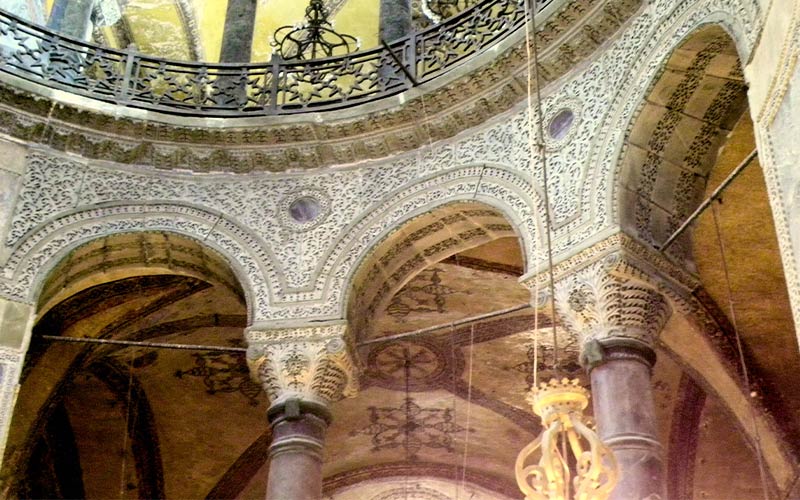
The columns and marble used in this structure were brought from the ancient city ruins in Anatolia and Syria, such as Aspendos, Ephesos, Baalbek, and Tarsus. The white marble in the building was brought from Marmara Island, green porphyries from Eğriboz Island, pink marble from Afyon, and yellow marble from North Africa.
-
Mosaic Ornaments
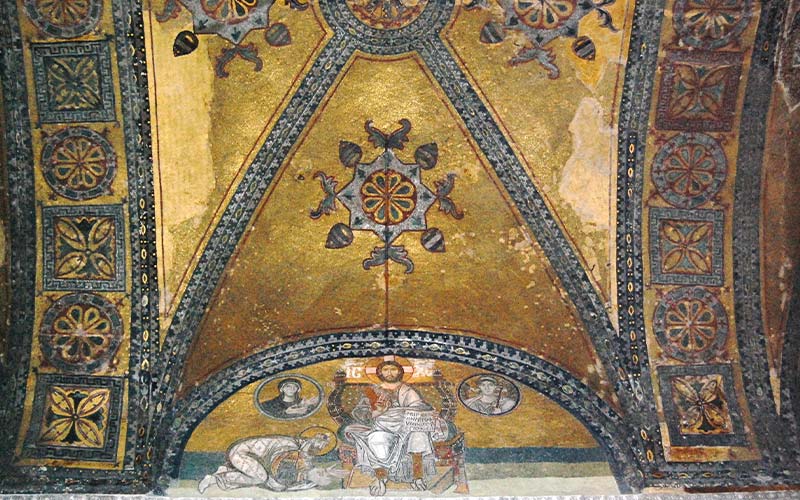
All surfaces of the mosque except the marble-covered walls are adorned with beautiful mosaics made of gold, silver, glass, terracotta, and coloured stones.
-
VI. Leon Mosaic
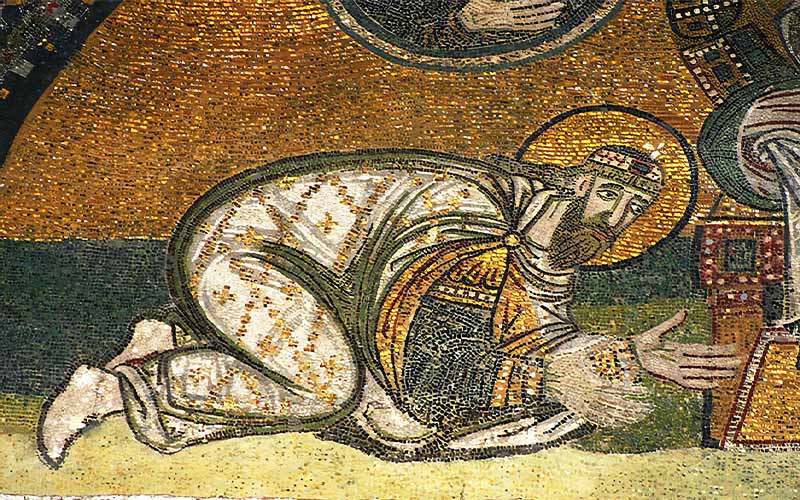
On the top of the Imperial Gate is the Pantokrator Jesus depiction. Jesus sits on a throne with a halo over his head and an open Bible (the writings are in Greek) in his hand as he is blessing the entire humanity. The Greek inscription on the bible reads, "Peace be upon you all; I am the Light of the world."
-
Wish Column
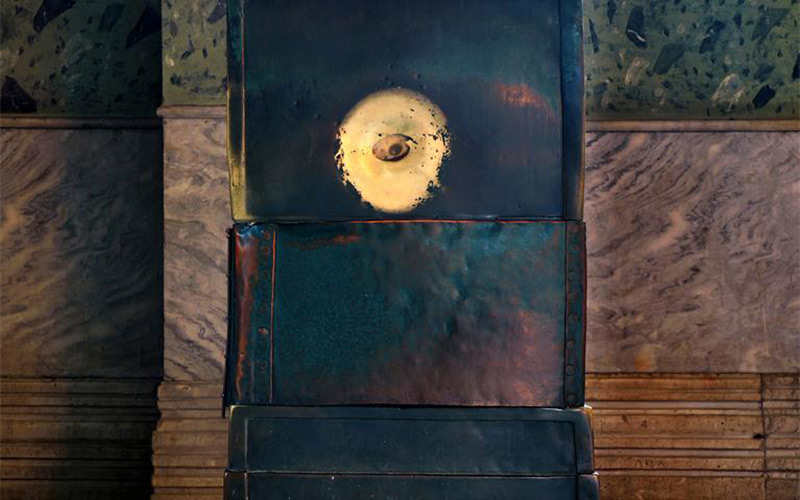
The Wish Column, also known as the "sweating column", the "wishing column", or the "crying column", is in the northwest of the building. The column is covered with bronze plates and has a hole in the middle.
It is said to have been moist since the appearance of Gregory the Wonderworker near the column in 1200. In another legend, this wetness is said to be the tears of Mary.
Rumours also say it helped people recover, and people believed they would heal when they put their fingers in the hole of the column and rubbed their wet fingers over where they felt the disease.
Emperor's Gate
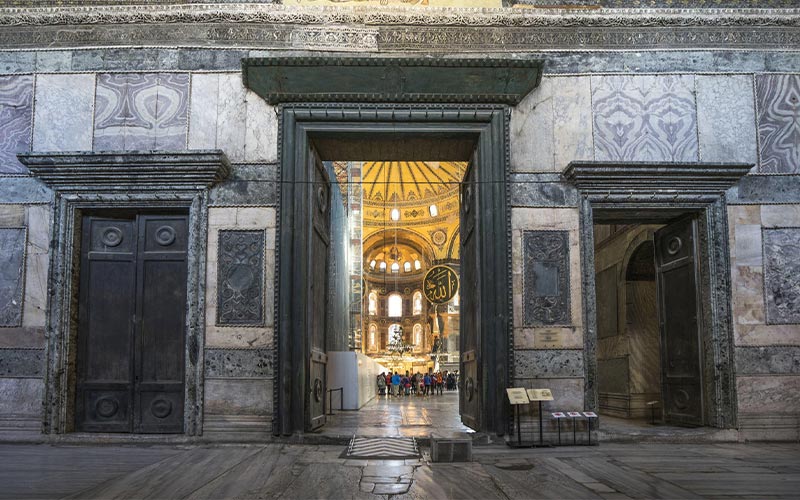
This gate is the enormous door of Hagia Sophia, dating back to the 6th century. It provides the transition from the interior narthex section to the central place. The Emperor door is bronze framed and made of oak wood. The door was used only by the Emperor.
It is believed that the door may have been made of the woods of Noah's Ark.
Talisman gates
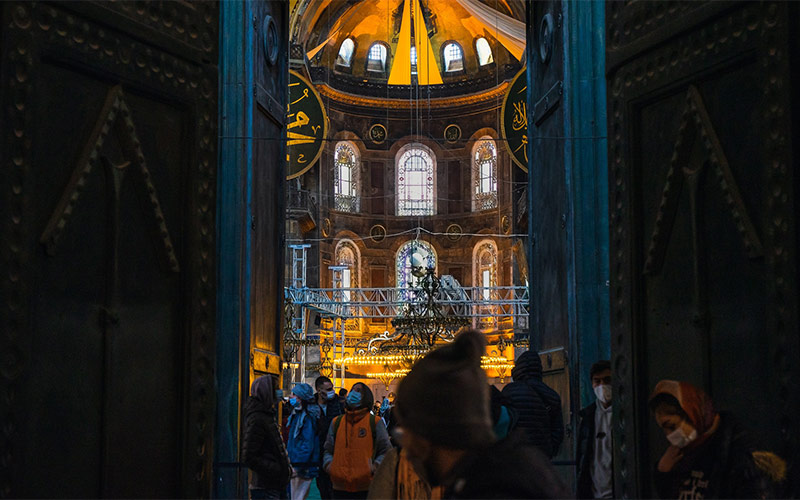
According to the legend, Hagia Sophia has a total of 361 doors, but 101 of them are big and talisman. Because whenever these doors are counted, an extra entry appears.
Sacred Relics of Hz.Jesus

According to Christian discourse, The nails used when crucifying Jesus from Jerusalem are hidden in one of the secret sections of Hagia Sophia. The reason why they hid the Sacred Relics in Hagia Sophia is that Jesus would land in Hagia Sophia in the world 40 thousand years later.
Apocalyptic Date
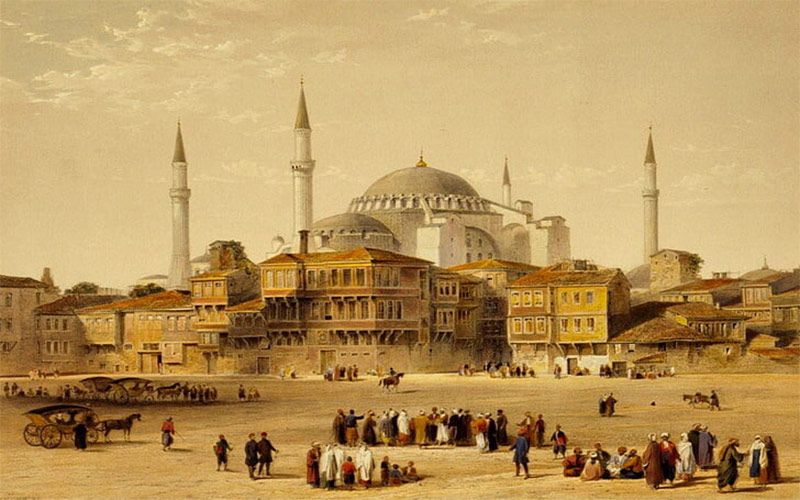
Upon entering through the door in the south direction of the building, you will see an inscription on a column that says, "Yevm-i Pazar on eighteen, 1038 a year". It is said that this is when the apocalypse would break, written by Hızır.
Devil's Prison in Hagia Sophia
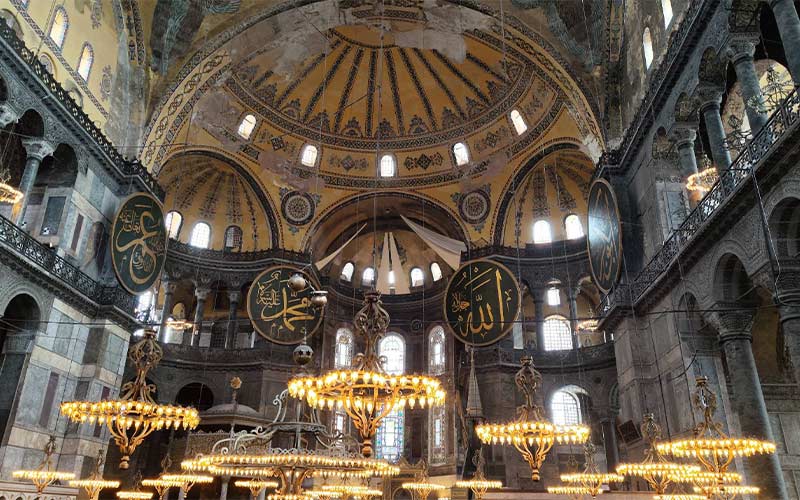
After the conquest of Istanbul, when Fatih Sultan Mehmet ordered Hagia Sophia to be converted into a mosque, he put Akşemsettin in charge of this work.
Although the workers wanted to work, they could not because the devil did not want Hagia Sophia to be a mosque.
When Akşemsettin realized this situation, he prostrated and prayed. Allah accepted his prayer and imprisoned the devil in marble in Hagia Sophia.
Visiting Etiquette at Hagia Sophia

Since Hagia Sophia is a working mosque, there is no entrance fee required to visit. Non-Muslims can enter the mosque outside prayer times; however, they must be respectfully dressed (no shorts, short skirts, or shoulder-less tops), and women should wear a headscarf before entering. If you don't have one, do not worry, you can borrow one for free at the main entrance.
All visitors need to remove their footwear on entry.
Location of Hagia Sophia

Hagia Sophia is located in Sultanahmet Square, near many tourist attractions, including the Sultanahmet Mosque, Basilica Cistern and Topkapi Palace.
How to Get to Hagia Sophia?
If you are taking the Metro: The nearest metro stop to Hagia Sophia is Yenikapı Metro Station. After getting off at Yenikapı Station, you can use the T1 tram to reach Hagia Sophia at the Sultanahmet stop. Of course, you can also get to this marvellous grand mosque by your private car or taxi.
Hagia Sophia Hours
Hagia Sophia is open to visitors 24/7. Therefore, you can enjoy this architectural wonder and feel its age-old spirit whenever possible!
Helpful Tips to Make Your Visit More Exciting
- The entrance to the Hagia Sophia is free. However, an audio-guided tour would be best because the museum doesn't offer much information.
- There are also guides you can hire at the entrance if you'd like to have things explained to you as you go.
- Non-Muslims can visit the Hagia Sophia mosque after praying for hours.
- Most of the beautiful artworks are on the east end, as the original Christian church was built towards the East, which was also the direction facing Mecca.
- You should remove your shoes before stepping onto the mosque's carpets.
- Follow the dress code- Avoid wearing revealing clothes with too much skin. Women must wear a scarf to cover their heads, and men should avoid wearing shorts.
- Authorities distribute headscarves on the premises.
- Carry enough cash, as most places accept only cash.
- Wear comfortable clothes and walking shoes to explore the museum comfortably on foot.
- Book tickets beforehand to avoid last-minute hassle with lodging and accommodation.
- The Hagia Sophia is not heated or air-conditioned on the inside so it can be uncomfortable in the middle of the summer or winter. So be prepared!
- The best time to visit is early morning, around 9 am, and late evenings have fewer crowds.
- If you are visiting the Hagia Sophia from the airport, you can use a taxi or Uber. However, it's much cheaper to take the HAVABÜS shuttle bus from the airport to Taksim Square and then grab an Uber for the remaining short distance trip from Taksim to Sultanahmet.
- The ground floor of the building is the best place for Instagram-worthy shots. You get to capture the gorgeous ornamental ceiling and splendid interiors.
Comment
Leave a Comment